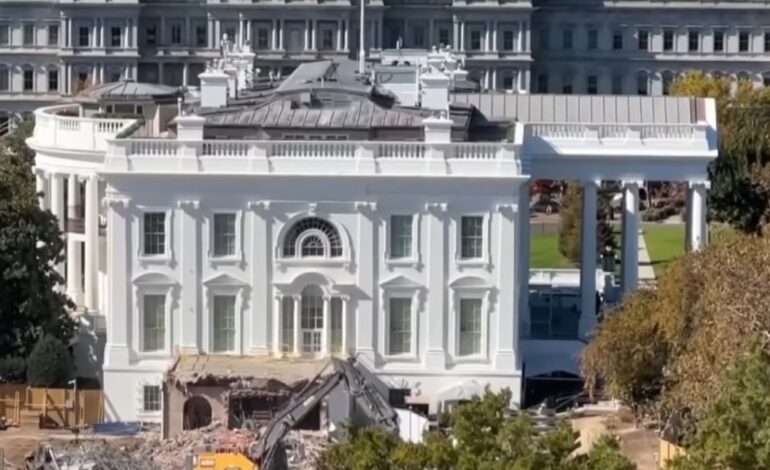
White House defends East Wing demolition for Trump’s $250 million ballroom
The White House has defended the partial demolition of the East Wing, traditionally the office area for the First Lady, to make way for President Donald Trump’s $250 million ballroom. Press Secretary Karoline Leavitt stated that the project ensures the “People’s House will continue to serve the American people and their presidents for centuries to come.”
Leavitt highlighted on her official X account that the new ballroom is “beautiful and much-needed,” emphasizing that it would preserve the historic function of the White House while modernizing facilities.
Despite the ongoing construction, the White House has not yet received formal approval from the National Capital Planning Commission (NCPC), the federal body responsible for overseeing major renovations and construction in Washington. Construction began on Monday, with dramatic photos showing the East Wing’s facade partially torn down and windows damaged. Trump referenced the work during a visit by 2025 college baseball champions from Louisiana State University and LSU-Shreveport, noting, “It just started today.”
NCPC chairman Will Scharf, also the White House Staff Secretary, stated the agency does not have jurisdiction over demolition or site preparation on federal property, though it remains unclear whether final ballroom plans have been submitted for review.
The East Wing, built in 1902 and expanded in 1942, will be temporarily relocated during the project. Leavitt assured that the offices will be modernized without permanent removal.
Trump has defended the project as a long-desired addition for Presidents, citing the East Room’s limited 200-person capacity. The 90,000-square-foot, glass-walled ballroom is privately funded by donors and companies, according to Trump, and is expected to be completed before his term ends in January 2029.
The ballroom will be the largest structural change to the Executive Mansion since the 1948 addition of the Truman Balcony, surpassing even the residence itself in scale.